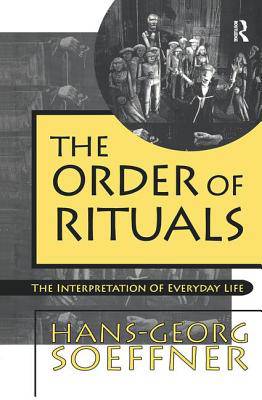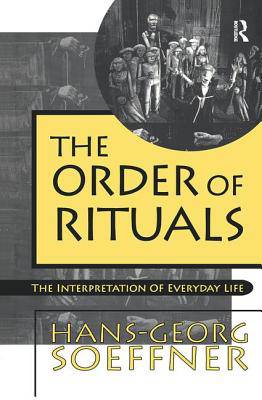
- Retrait gratuit dans votre magasin Club
- 7.000.000 titres dans notre catalogue
- Payer en toute sécurité
- Toujours un magasin près de chez vous
- Retrait gratuit dans votre magasin Club
- 7.000.0000 titres dans notre catalogue
- Payer en toute sécurité
- Toujours un magasin près de chez vous
Description
To those still accustomed to seeing social order depicted in classes, strata, central groups, or institutions, and who measure and classify the social world according to "centers" and "margins," modern society presents itself as ambiguous and unmanageable. This is not unprecedented. Human societies often discover themselves in situations in which the traditional grids of order and stratification lose their value and fail to serve as guideposts for individuals.
In The Order of Rituals, Hans-Georg Soeffner aims to answer the question: Through what efforts of order and orientation are loosely organized societies like ours held together? Soeffner focuses on symbolic forms of self-presentation that bring focus and clarity to our lives, such as emblems, fashions, styles, and symbols. As these replace old orders of classes or strata, there is a further consequence. Economically, culturally, and ethnically "mixed" societies not only return to specific visible forms of presentation, but also present themselves and their worldviews as a public stage of life-styles, attitudes, and demeanor.
Soeffner asserts that society preserves certain continuously handed-down forms of action and ritual as specific symbolic forms over a long period of time. The Order of Rituals describes these symbols and routines of everyday life in fascinating detail, coupled with thoughtful analysis. Sociologists, anthropologists, and philosophers will all benefit immensely from this book.
Spécifications
Parties prenantes
- Auteur(s) :
- Editeur:
Contenu
- Nombre de pages :
- 206
- Langue:
- Anglais
Caractéristiques
- EAN:
- 9781138512849
- Date de parution :
- 05-02-18
- Format:
- Livre broché
- Format numérique:
- Trade paperback (VS)
- Dimensions :
- 152 mm x 229 mm
- Poids :
- 379 g

Les avis
Nous publions uniquement les avis qui respectent les conditions requises. Consultez nos conditions pour les avis.






